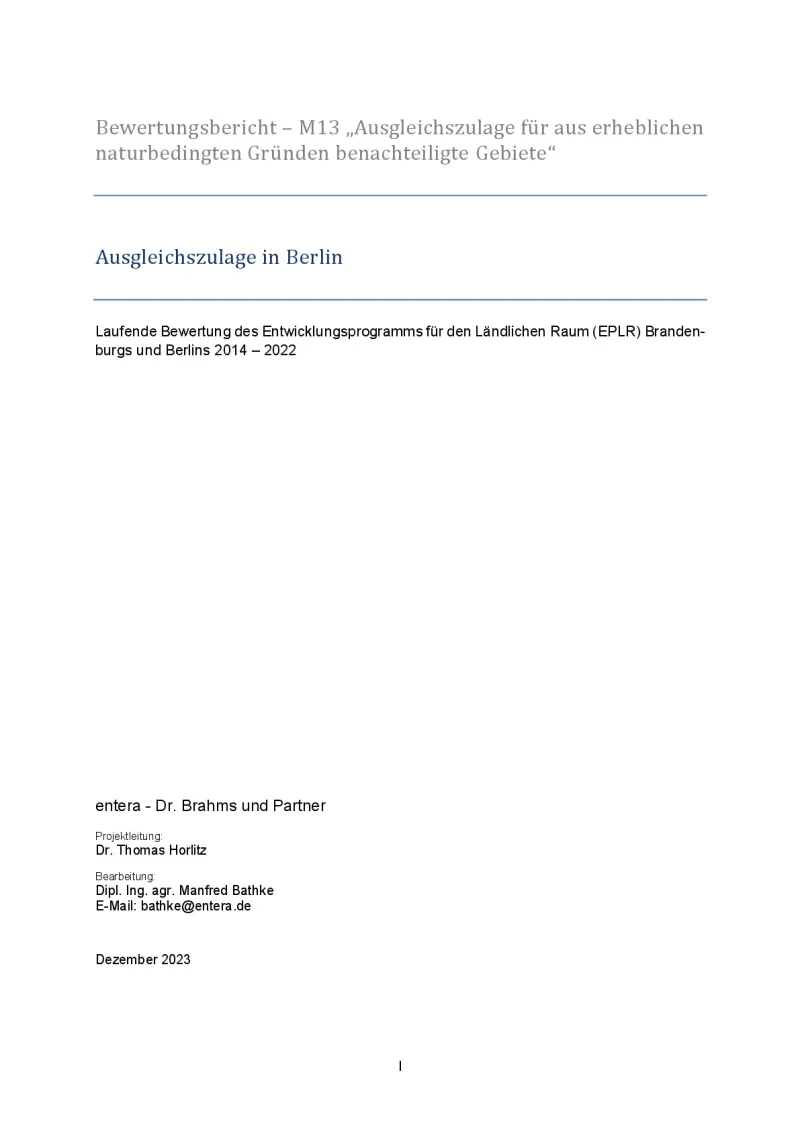Evaluation report on compensatory allowance in Berlin
The evaluation assesses Measure 13 (Compensatory allowance for areas disadvantaged for significant natural reasons) in terms of its impact on income and the environment.
- Germany
- 2014-2022
- Socio-economic impacts


As part of the evaluation of the 2014-2022 European Agricultural Fund for Rural Development (EAFRD) programme, the funding data and other documents were analysed and assessed with regard to the effects of the funding Measure 13 for Berlin.
As part of the evaluation, the impact on income and the environment was analysed.
An analysis of the economic effects of the compensatory allowance was carried out based on the following topics: the structural difference between farms inside and outside the less-favoured areas, the difference in contribution margins inside and outside the less-favoured areas, and the contribution made by the compensatory allowance.
With regard to limitations, a sufficient amount of test farm data was not available for Berlin farms. However, with regard to the economic effects on farms, it was possible to refer to the analyses available for Brandenburg, which are differentiated according to various farming areas.
The evaluation shows that the local natural conditions for agriculture in Berlin are comparatively poor, like those in Brandenburg. The compensatory allowance contributes to the stabilisation of agricultural income in the disadvantaged areas of Berlin; however, in the long term, other factors might also be decisive for the survival of farms e.g. the state's general land policy, the rental prices for state-owned land, etc.
All businesses in Berlin cannot survive solely through the market. Farms and agricultural land must be supported to preserve them.
The compensatory allowances (German: AGZ) contribute to agricultural income and have the advantage that they can be paid with minimal administrative effort and low implementation costs.
Author(s)
Manfred Bathke